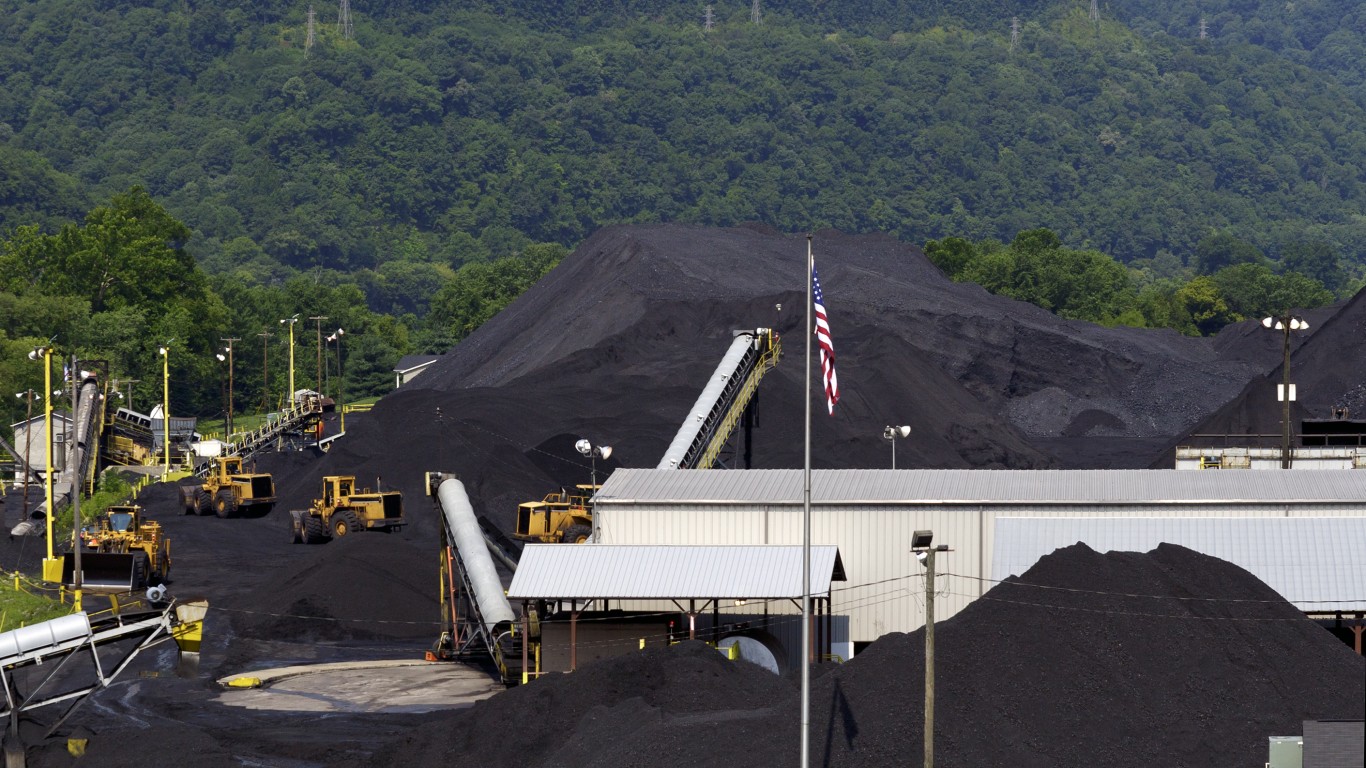
Big oil remains up against the ropes. On top of the 2020 COVID-19 pandemic crushing oil demand, a war for market share between Russia and Saudi Arabia delivered a crushing blow to even the healthiest of the oil companies this year.
While many companies can survive and are hedged, the mighty Exxon Mobil Corp. (NYSE: XOM) and Chevron Corp. (NYSE: CVX) are mere shadows of their former glory days. Some very hard decisions could have to be made ahead, and those actions may go against what management has pledged not to do.
While it is true that almost every oil company has run into issues, Exxon may need some serious intervention if it wants to have smooth operations in the years ahead. While shareholders might feel even more pain initially, the efforts might position the company to sail through future storms.
History was recently broken after S&P booted Exxon out of the Dow Jones industrial average. Chevron is deemed the healthier of the two oil and gas giants, so its position in the Dow was maintained. Exxon was always the larger of the two leaders, but its market cap of $141 billion was barely higher than Chevron’s $137 billion. Those market capitalizations briefly inverted in prior weeks.
Exxon used to be the most valuable company in America, but it was ranked down at number 44 on the S& P 500 on last look. Shareholders may not like what needs to happen, but sometimes near-term pain is required for long-term safety. The question now is whether Exxon has now waited too long.
Exxon’s mergers and acquisitions ambitions have not been very active since the 2009 acquisition of XTO Energy, but the company has been shifting its focus to a smaller group of energy projects. Much of its future now seems to revolve around major fields off Guyana.
While this entire review is very negative, it is impossible to predict where Exxon’s stock will go in the future. It could show another major recovery, but it could keep listing lower. It recovered to over $50 briefly this summer, after challenging $30 in March, but now it’s back to within 10% of its lows. It seems impossible to conceive a return to $70, as seen early this year, and ditto for the prior peak at $100 or so back in 2014.
It remains uncertain if Exxon’s long-term outlook is realistic. The company’s latest 2040 outlook noted that oil and natural gas make up about 55% of global energy use today, but by 2040 the company still believes that oil and gas will continue to supply more than 50% of global energy. The company also has noted that investment in oil and natural gas is still required to replace natural decline from existing production and to meet future demand.
Another issue is the electrification of cars and higher fuel efficiency, both of which compete directly against current oil demand. Exxon’s 2040 outlook does note that both efficiency and electric vehicles will result in a decline in light-duty vehicle liquid fuel demand. The company still notes that transportation fuel demand growth will be driven by increased commercial activity, and it sees the affordability and widely available oil keeping it as the predominant transportation fuel ahead.
Beyond Tesla, automakers involved in moving toward electrification of their car fleets include General Motors, Ford, Volkswagen and a host of others. California now has moved toward banning gasoline-powered cars by 2035, and many nations in the world have pledged to ban future gasoline-powered car sales in varying timelines. As of 2020, Exxon has a lot more to lose from the trend of electrification than it has to gain.
Will the company branch into new energy sources beyond biofuels? Exxon claims to have spent close to $250 million already in biofuel research over the past decade. Is that enough when other overseas oil giants are moving toward renewable and cleaner energy ahead?
The future political changes could be a disaster for all oil companies. The potential for losing certain expense categories and facing higher taxes might be the least of the worries. Does a company like Exxon have the resources to defend itself from potential climate change lawsuits? Can the company realize a fair value if fossil fuel assets are forced into public purchases?
Shareholder returns have been a priority of the oil leaders. While buybacks have been stopped in the current climate, Chevron’s 7.2% dividend yield compares to a current 10.3% yield for Exxon at its current share price. That is far from normal, and pledges from both companies to keep these dividends just may not be possible. Exxon has seen its long-term debt surge from $26 billion at the end of 2019 to over $46 billion as of June 30, 2020. The company’s current debt has risen from $20.6 billion to $22.9 billion over the same period.
Some analysts have warned that the dividends from Exxon are just not sustainable over the long haul. Taking on additional debt to maintain a dividend might further cripple the company in the future.
Despite a major recovery in oil prices from the plunge-depth lows, anything close to $40 a barrel just is not very profitable for most oil companies. While hedging has helped in the past, many analysts see Exxon posting an operating loss in 2020. Also, despite calls for profitability in 2021, what happens if oil’s recovery already has peaked?
Exxon has joined the rest of the oil companies by lowering capital spending by cutting 30% ($10 billion) from the 2020 budget. Moving its focus to Guyana and keeping other large projects going simply may keep that capital expenditure higher than what the company would prefer.
Selling assets has been a longstanding practice in raising capital by energy companies. With asset values lower than the sellers would prefer, this means that asset sales are going to bring in less new capital than they would have in the past. Also, there are fewer buyers, with a lower number of healthy energy companies and with private equity buyers not being as active as in the past.
One additional issue hindering Exxon, and just about every other fossil fuel company, is the clean and green focus brought on by ESG (environmental, social and governance) investing. Exxon is behind many other energy companies in the renewable and clean energy field, and the company is seeing broader efforts in which investment funds, investment managers and public pensions are simply turning away from fossil fuel companies. On top of the ESG themed exchange-traded and mutual funds, now there are even strategies that do not include any companies in fossil fuels at all.
Exxon reportedly has spent more than $200 billion buying back its own stock. The buybacks have been halted, but that is well above the current market cap. The capital that was spent buying back stock at much higher prices would have brought a helping hand today, now that its debt has risen so much.
Analysts are not universally negative on Exxon (and Chevron and others), but even those who have remained positive generally have lowered their price targets over time. Refinitiv’s consensus analyst price target is currently $45.41, but that 36% in implied upside seems unreasonable. Exxon shares already are back close to the lows seen during the worst of the panic-selling in March, when the stock almost hit $30.
In 2020, high premium buyouts just haven’t been that common. Companies are still merging, but too many assets can be purchased for pennies on the dollar out of bankruptcy. One firm even has suggested that Chevron and Exxon should merge and maintain the Chevron name.
Some investors are still clinging to the notion that low valuations cannot last forever. That may be the case of course, but the market has proven time after time that it can keep punishing investors for far longer than they can stay afloat. Again, some investors simply will not buy oil stocks at any price or any valuation, now and in the future.
This entire exercise is admittedly just the negative side of the argument. That said, are the positive points of the argument anywhere close to the negative ones?
Exxon likely would deny that massive changes need to be made, given its long-term energy views. However, it is very possible that if commodity prices do not improve, or if the economy gets worse again, then very drastic and previously unthinkable measures could become necessary. Assets could be blown out at low prices, and there could be increased efforts in clean or renewable energy, a massive stock sale (or even perpetual preferred shares), divesting, or more headcount and pay rationalization. Even the dreaded right-sizing of the dividend that the company desperately wants to avoid could happen.
Credit card companies are handing out rewards and benefits to win the best customers. A good cash back card can be worth thousands of dollars a year in free money, not to mention other perks like travel, insurance, and access to fancy lounges. See our top picks for the best credit cards today. You won’t want to miss some of these offers.
Flywheel Publishing has partnered with CardRatings for our coverage of credit card products. Flywheel Publishing and CardRatings may receive a commission from card issuers.
Thank you for reading! Have some feedback for us?
Contact the 24/7 Wall St. editorial team.
 24/7 Wall St.
24/7 Wall St. 24/7 Wall St.
24/7 Wall St.


